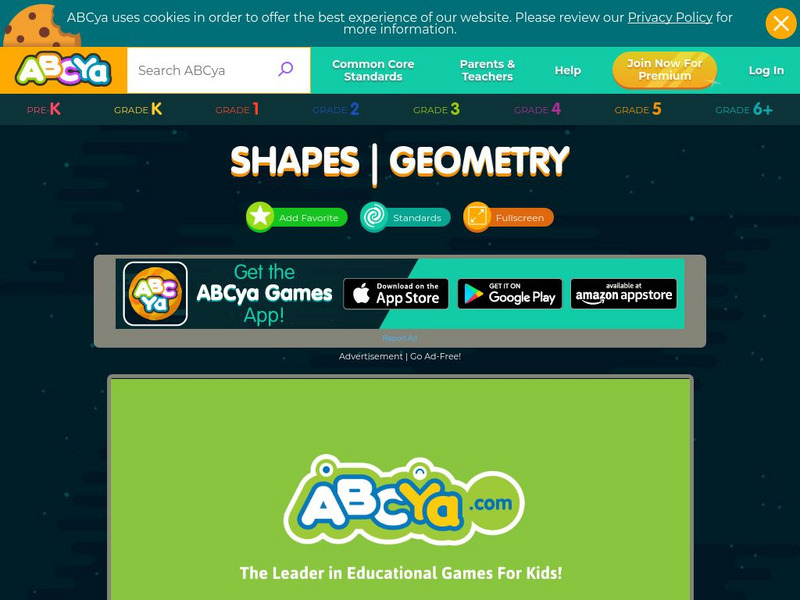Hi, what do you want to do?
Curated OER
Introduction to Unit V-Transformations
Students investigate transformations. In this Algebra I/Geometry lesson, students explore reflections, translations, rotations and dilations. The lesson includes examples of transformations in art, architecture, and...
Curated OER
Data Representation
Students solve real life scenarios using math. In this geometry instructional activity, students collect, predict and interpret data. They measure a chair using different measurements and choose what would make the chair the best design.
Curated OER
Geoboard Ideas
Learners build polygons on their geoboards. In this geometry lesson plan, students build and then draw it on paper and label it. Learners then switch with a partner to try an make a symmetrical shape.
Curated OER
Spice Up the Basal
Fifth graders study English reading and writing skills as they participate in exciting interdisciplinary hands-on activities using a basal reading series.
Curated OER
Fractals
Students explore the concept of fractals. In this fractal lesson, students use applets to explore Koch's Snowflake, Sierpinski's Triangle, and other fractals. Students develop these concepts through exploration and teacher guided...
Curated OER
Reflection, Rotation or Translation?
In this reflection, rotation and translation worksheet, students determine which has been done to a set of 6 figures. A reference web site is given for additional activities.
Curated OER
Pattern Using Unit Cells
Students explore the pattern of the unit cell. For this science lesson, students color the unit cells on a worksheet and create a pattern using unit cells.
Curated OER
Similar or Not?
Fifth graders define the meaning of similar and congruent using concrete objects. They make similar and congruent figures using geoboards. They draw their figures on dot paper, and color their designs.
Curated OER
Geo Jammin By Design: Coordinated
Young scholars watch the teacher draw on the chalkboard and try to determine the form being drawn. They use questions to determine Quadrant #1 of a coordinate plane.
Curated OER
Origami Frogs
Ninth graders explore a variety of geometry and science concept while making an origami frog. The fold paper into the shape of a frog and conduct measurement activities including frog leaps.
Curated OER
Building Paper Bridges
Students construct a bridge that can hold 100 pennies. In this math instructional activity, students evaluate the strength of their bridges. They predict how much weight a bridge can hold based on its design.
E-learning for Kids
E Learning for Kids: Math: Castle in the Clouds: Space: 2 D Shapes and Symmetry
Students will explore symmetry through a variety of learning games.
Mathigon
Mathigon: Geometry: Transformations and Symmetry: Dilations
This lesson focuses on dilations, a dilation is a transformation that resizes a geometric shape, by making it bigger or smaller.
PBS
Pbs Learning Media: Math + Arts: Geometry in Dance
In this instructional activity, students observe symmetry, geometric shapes, and angles in two Early American dances, and then choreograph their own dance with symmetrical figures. Media and teaching materials are included.
Alabama Learning Exchange
Alex: Origami Geometry
Origami (ori-folding, kami-paper) is the traditional Japanese art of folding paper. Students will discover relationships between shapes as they are actively engaged in this hands on geometry lesson to learn basic geometric shapes, their...
PBS
Pbs Learning Media: Patterns in Nature
In this video segment [3:25] from Cyberchase, a plant expert shows Bianca the patterns and symmetry found in nature.
Science U
Science U: Welcome to the Geometry Center!
Site provides information and activities on various aspects of geometry, from shapes to patters and symmetry. Make your own tetra puzzle or build an icosahedron in the classroom. Interactive and fun.
ABCya
Ab Cya: Shapes: Geometry Game
Shapes is a fun educational activity to help children learn basic properties of simple geometric figures. Children will practice looking for differences and similarities between shapes to complete puzzles. Shapes! gets progressively more...
University of Cambridge
University of Cambridge: Maths and Sports: National Flags
During the Olympic and Paralympic Games many national flags will be on display. This activity explores 2D shapes, angles and symmetries in the context of flag designs, and is designed to be accessible to primary pupils at Key Stage 2.
National Council of Teachers of Mathematics
The Math Forum: Line Symmetry
This site from The Math Forum is a great site if you are looking for activities to engage your students in learning about line symmetry. Peruse this collection of activities for one or two or four that would be right for your students....
PBS
Pbs Mathline Lesson: Geometry, It's a Perfect Fit [Pdf]
This two-part geometry lesson plan has students identify, describe, and classify two-dimensional shapes. Students engage in hands-on activities including identifying shapes in the classroom, creating patterns with shapes, identifying...
Khan Academy
Khan Academy: Symmetry of 2 D Shapes
Analyze various shapes according to their reflective and rotational symmetries. Students receive immediate feedback and have the opportunity to try questions repeatedly, watch a video or receive hints.
CK-12 Foundation
Ck 12: Elem Math: Identify and Count the Lines of Symmetry in Various Shapes
[Free Registration/Login may be required to access all resource tools.] Students watch a video and take an assessment on identifying and counting lines of symmetry in various shapes.

























